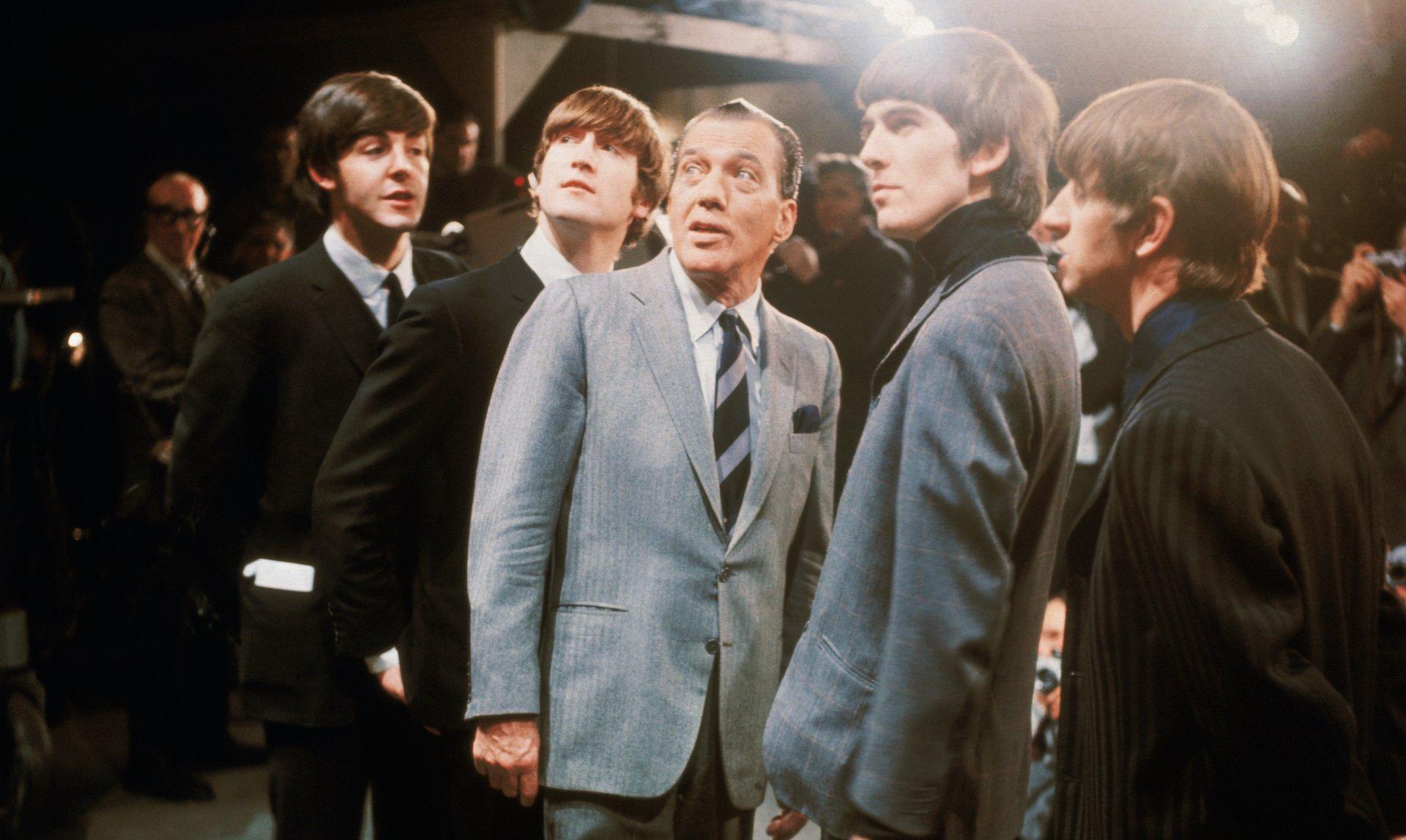Top 100 Songs
Dave’s Music Database lists are determined by song’s appearances on best-of lists, appearances on compilations and live albums by the featured act, and songs’ chart success, sales, radio airplay, streaming, and awards. Songs which reached #1 on the U.S. pop charts are noted. Those songs which were duets with Byron Harlan are noted with BH.
DMDB Top 1%:
1. Alexander’s Ragtime Band (w/ BH, 1911) #1
2. Bill Bailey, Won’t You Please Come Home? (1902) #1
3. Darktown Strutters’ Ball (w/ BH, 1918) #1
4. The Aba Daba Honeymoon (w/ BH, 1901) #1
5. The Preacher and the Bear (1905) #1
6. Under the Bamboo Tree (1902) #1
7. Put Your Arms Around Me Honey (I Never Knew Any Girl Like You) (w/ BH, 1911) #1
8. Down Where the Wurzburger Flows (w/ BH, 1902) #1
9. Hello Ma Baby (1899) #1
DMDB Top 5%:
10. When the Midnight Choo Choo Leaves for Alabam’ (w/ BH, 1913) #1
11. Goodbye Dolly Gray (Big Four Quartet, 1901) #1
12. The Right Church But the Wrong Pew (w/ BH, 1909) #1
13. Ma Tiger Lily (1900) #1
14. Any Rags? (1903) #1
15. Under the Yum Yum Tree (w/ BH, 1911) #1
16. Hurrah for Baffin’s Bay (w/ BH, 1903) #1
17. I Love the Ladies (w/ BH, 1914) #1
18. Goodbye Eliza Jane (1903) #1
19. Mandy Lee (1900) #1
20. Everybody’s Doin’ It Now (w/ BH, 1912)
21. Camp Meetin’ Time (w/ BH, 1906) #1
22. Oh How She Could Yacki Hacki Wicki Wachi Woo (That's Love in Honolulu) (w/ BH, 1916) #1
23. That’s-a-Plenty (1909)
24. Alabama Jubilee (w/ BH, 1915)
25. Steamboat Bill (1911)
26. Tammany (w/ BH, 1905)
27. Coax Me (w/ BH, 1905)
28. Oh, You Circus Day (w/ BH, 1912)
29. What You Goin' to Do When the Rent Comes 'Round? (Rufus Rastas Johnson Brown) (1905)
30. The Old Grey Mare (Whiffle Tree) (w/ BH, 1918)
31. I’ve Got a Feelin’ for You (1904)
32. I’d Leave My Happy Home for Love (1899) #1
33. My Irish Molly-O (1905)
34. When Uncle Joe Plays a Rag on His Old Banjo (1912)
35. I’m a Jonah Man (1903)
36. Melinda’s Wedding Day (w/ BH, 1913)
37. If Money Talks, It Ain’t on Speakin’ Terms with Me (1902)
38. Down Among the Sugar Cane (w/ BH, 1909)
39. Down in Jungle Town (w/ BH, 1908)
40. They're Wearing 'Em Higher in Hawaii (w/ BH, 1917)
41. I Love, I Love, I Love My Wife, But Oh You Kid! (1909)
42. Snookey Ookums (w/ BH, 1913)
43. The Oceana Roll (1911)
44. You Can’t Fool All the People All the Time (1903)
45. The Cubanola Glide (w/ BH, 1910)
46. The Wedding of Reuben and the Maid (w/ BH, 1901)
47. My Gal Irene (w/ BH, 1908)
48. Cindy, I Dream About You (1901)
49. Waiting for the Robert E. Lee (w/ BH, 1912)
DMDB Top 10%:
50. That Mesmerizing Mendelssohn Tune (w/ BH, 1910)
51. Under the Anheuser Busch (w/ BH, 1904)
52. Under the Bamboo Tree (w/ BH, 1903)
53. Parody on “Hiawatha” (w/ BH, 1903)
54. The International Rag (w/ BH, 1913)
55. If I’m Goin’ to Die, I’m Goin’ to Have Some Fun (1907)
56. I Love It! (1911)
57. In My Merry Oldsmobile (w/ BH, 1905)
58. Tell Me Dusky Maiden (1902)
59. The Leader of the German Band (w/ BH, 1906)
60. Nobody (1905)
61. I Never Trouble Trouble Until Trouble Troubles Me (1901)
62. If He Comes in, I’m Going Out (1910)
63. Down in Chattanooga (w/ BH, 1914)
64. Sugar Moon (w/ BH, 1910)
65. Celebratin’ Day in Tennessee (w/ BH, 1914)
66. Hannah, Won’t You Open That Door? (1904)
67. The Honeymoon Glide (w/ BH, 1911)
68. And a Little Bit More (w/ BH, 1907)
69. I’m Crazy ‘Bout It! (w/ BH, 1906)
70. I’m Going Back to Dixie (aka “I Want to Be in Dixie”) (w/ BH, 1912)
71. That Mysterious Rag (w/ Arthur Campbell, 1912)
DMDB Top 20%:
72. Out in an Automobile (w/ BH, 1906)
73. Casey Jones (w/ BH, 1910)
74. Down Where the Wurzburger Flows (1904)
75. All Coons Look Alike to Me (w/ Vess Ossman, 1902)
76. It Looks Like a Big Night Tonight (w/ BH, 1908)
77. Kiss Me Honey Do (1899) #1
78. Here Comes My Daddy Now (w/ BH, 1913)
79. The Memphis Blues (w/ BH, 1915)
80. I Guess I’ll Have to Telegraph My Baby (1899) #1
81. Oh, That Beautiful Rag (1910)
82. On a Monkey Honeymoon (w/ BH, 1910)
83. Down Where the Big Bananas Grow (w/ BH, 1910)
84. Moonlight in Jungle Land (w/ BH, 1910)
85. Minstrel Parade (w/ BH, 1915)
86. When You Ain’t Got No More Money, Well, You Needn’t Come Around (1899) #1
87. Yip-I-Addy-I-Ay! (w/ BH, 1909)
88. I Don’t Know Where I’m Goin’ to Have Some Fun (1906)
89. Paddle Your Own Canoe (w/ BH, 1906)
90. Yaaka Hula Hickey Dula (w/ BH, 1916)
91. The Argentines, the Portuguese, and the Greeks (1920)
92. Camp Meeting Band (w/ BH, 1914)
93. My Wife’s Gone to the Country (Hurah! Hurah!) (w/ BH, 1909)
94. Down in Dear Old New Orleans (w/ BH, 1913)
95. Down at the Husking Bee (w/ BH, 1909)
96. In the Land of Harmony (1911)
97. On the 5:15 (w/ BH, 1915)
98. On the Old Fall River Line (w/ BH, 1914)
99. Lily of the Valley (w/ BH, 1917)
100. Here It Comes Again (1906)
Resources and Related Links:
First posted 5/31/2019; last updated 6/6/2022. |










